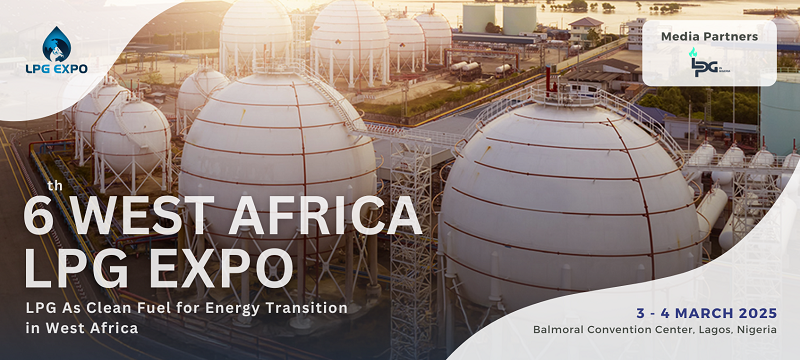- 4969
- 0
Sharing Ideas and Updates on LPG in Nigeria and related information to enable effective collaboration within the LPG Value Chain
CNG Or LPG AUTOGAS FOR NIGERIA?

CNG or LPG AUTOGAS FOR NIGERIA?
If you have been thinking about how to provide an effective fuel palliative against the backdrop of the recent fuel subsidy removal that has sent prices of petrol sky-bound with the potential for more price increases in consonance with crude oil prices, then this question - CNG or LPG Autogas come to mind.
This write-up is an attempt to show how the low-hanging fruit for Autogas in Nigeria is LPG. And, how it can effectively complement the CNG Autogas drive of the Nigerian government.
The Nigerian government has been quite vocal about the use of CNG Autogas and has announced several initiatives; like the NNPC Ltd's partnership with NIPCO, the procurement of 3000 CNG buses in Nigeria. Whilst these initiatives could serve as a springboard to the proliferation of private-based investment in the sector, it requires so much investment in terms of CNG Autogas station infrastructure and of course - CNG conversion kit.
I must say in terms of fuel efficiency and cost of fueling, CNG trumps LPG. The big question is, how do we make it happen, how do we effectively transform Nigerians from the use of petrol as a vehicular fuel to Autogas - we are talking about 200 Million plus Nigeria with about 12 million vehicles - according to the latest data made available by the National Bureau for Statistics (2018) there were a total of 11.8 million vehicles in Nigeria.
How much does it cost to set up a Daughter CNG Autogas Station vs LPG Autogas station?
It would cost you about 500,000 USD for a CNG Autogas station against 50,000 USD for an LPG station, this is exclusive of land. This is information gathered from experts in Nigeria and abroad.
We can learn from the LPG infrastructure revolution so far.
Since the intervention of NLNG in 2007, the LPG industry has grown by over 1000% in terms of annual volume consumption ( 70,000MT to over 1 Million MT ), and also grown by several thousand in percentage in terms of infrastructure from just the NPSC 4000 MT LPG storage in Apapa, the 1000MT storage at Calabar and several inland LPG storage built during the Butanization program of the 90s, to over 70,000MT of storage infrastructures, more than 1000 LPG Gas plants and several transportation trucks. All these improvements sole driven by the private sector in a deregulated LPG market.
The LPG Autogas station setup is not far from the traditional skid plant set up which we have all over the country, the cost of set up and deployment is not far from the LPG plants we already have, and of course, the financial outlay is something Nigerians can handle. We just need to have a clear policy and good awareness for business people and trust Nigerians the revolution will be achieved in no time.
How available is CNG vs LPG?
NNPC Ltd estimates domestic demand for natural gas rising from current levels of 1.5 Bcf/d to 7.4 Bcf/d by 2027, as a result of CNG Autogas which is very good for our Gas Business. Do we have enough gas? Yes, we do; we are about 209 Trillion cubic feet of confirmed Natural Gas reserve. But we need to make funding available to harness the CNG opportunity both in upstream, midstream, and downstream.
For LPG, the story is a bit different.
We may not have enough LPG in the country yet; Yes because total local LPG production is currently about 600,000MT. We would need about 3 million tons of LPG to satisfy the Autogas industry. So what do we do? We can get more propane volumes from NLNG, get our Flaregas assets optimized, and import propane whilst we develop our gas assets with potential huge LPG. The quick win here however is to import propane and this is not different from the current LPG importation going on; if you have followed the mont belvieu posts on this platform, you will see that the price of propane which is a better LPG for Autogas, is most times less than Butane prices.
In terms of infrastructure, we are ready. The country will have about 100,000MT LPG depot capacity by the end of 2024 and the current is at about 70,000 MT.
So in terms of investment, for LPG, we just need to position our LPG Skid plants better to enable easy access for vehicles and also invest in the conversion of vehicles. Again, the cost of setting up an LPG Autogas Skid plant is about 23,500 USD CIF Apapa for a 5MT, with 50 million Naira a significantly higher capacity can be achieved.
Some LPG Autogas Success story in Africa
Although Autogas is the most widely used alternative to conventional automotive fuels with huge acceptance in countries like Australia, Bulgaria, Canada, China, the Czech Republic, France, Germany, Greece, India, Italy, Japan, South Korea, Lithuania, Mexico, Netherlands, Poland, Portugal, Russia, Serbia, Spain, Thailand, Turkey, Ukraine, UK, US, not much has been achieved in Africa with over about 84% of its LPG consumption for domestic use ( according to WLPGA 2015 report). In 2014, 16 million tonnes of LPG were produced in Africa, primarily by Algeria (55%), followed by Angola (13%), Egypt (10%), and Nigeria (9%), while total consumption in the region was 13 million tonnes (Norad - Final Report Study on the Potential of Increased Use of LPG for Cooking in Developing Countries).
Algeria has over 490,000 vehicles running on Autogas and plans to have one million vehicles
running on Autogas by 2023, according to NAFTAL, the state-owned Energy company. The country has also committed to converting all public-sector cars to LPG.
In the next post, we will be sharing, what the government can do to encourage the growth of LPG Autogas as a complement to the CNG Autogas. A healthy mix is what Nigeria needs.















0 Comment.